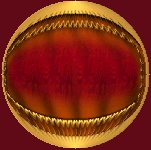The Sugar Plum Fairy
(c) Atham-Z 2006
Very little information is recorded or available about this fairy, aside from the story of "The Nutcracker Suite", the famous ballet by Peter Tchaikovsky. This fairy seems to have Anglo Saxon, Celtic and Druidic origins connected to winter and the Christmas celebration. But for what it is worth, here is what I found about this delicate symbol of seasonal treats and magic!
In the famous ballet, the Nutcracker Prince led the heroine to the "Land of Ice and Snow" where they waltzed with snow fairies. Then the Sugar Plum Fairy appeared and presided over the following banquet and entertainment in the candy kingdom. (Great excuse for lots of dancing!)
Other "sources" state that these fairies are very rarely seen and then only at dawn particularly during the bird song dawn chorus where they have been seen resting singly or dancing in pairs. In spite of the seasonal connection in our era, it is stated that best times and places for sightings are in the orchards in early spring at apple and cherry blossom time or harvest time for sweet plums. The absolute best time to sight one is when the fruit is fully ripened and falls to the ground. This "source" also suggests: "Failing a sighting in the woods, encouragement could be made for small children to have ballet lessons so that Sugar Plum Fairies may be seen throughout the year world wide." (Hmn.)
These fairies reportedly like sweets, bees, ballet dancing, making jam and wine, organic cultivation, music and Christmas time. They really dislike mice, and powdery mildew on plums. Apparently they vary in size and blend in with the color of their surroundings and the color of the plum fruit. Generally they are never more that three to four inches high. Their favourite creatures are the Snow King and Queen, ladybugs, toy soldiers, the Nutcracker Prince, dragonflies and butterflies.
Sir Arthur Conan Doyle became embroiled in an effort to prove the existence of fairies in his era. With the above information came a timely warning, "Should you see one, never approach a fairy or take photographs, the fairies seldom show on the prints. It is recommended to take a pencil and paper and quickly sketch what you see. Please remember to note everything, i.e. time, weather, month of sighting, type of plum." Needless to say analysis of Victorian photos of lovely little girls playing with fairies exposed the fairies in the pictures to be paper cutouts.
For me, I have an imprint of this delectable fairy on the videotape of my mind, dancing delicately to the tinkling of the dance music named after her. The Sugar Plum Fairy, like other strong cultural icons of Christmas, is part of the spirit of the season. All the best to you.

















